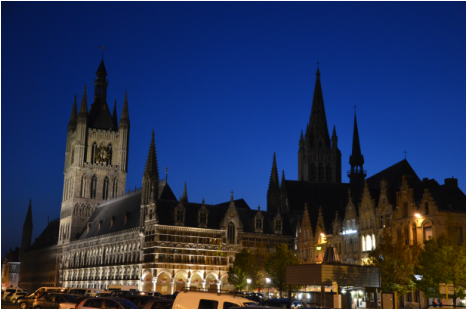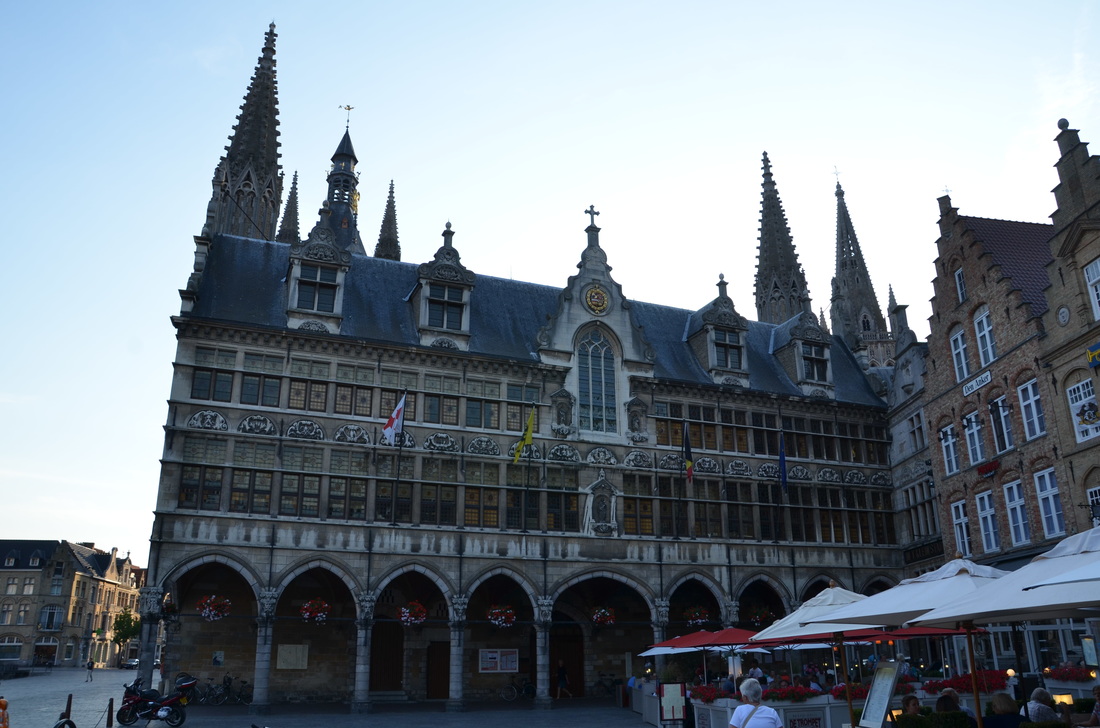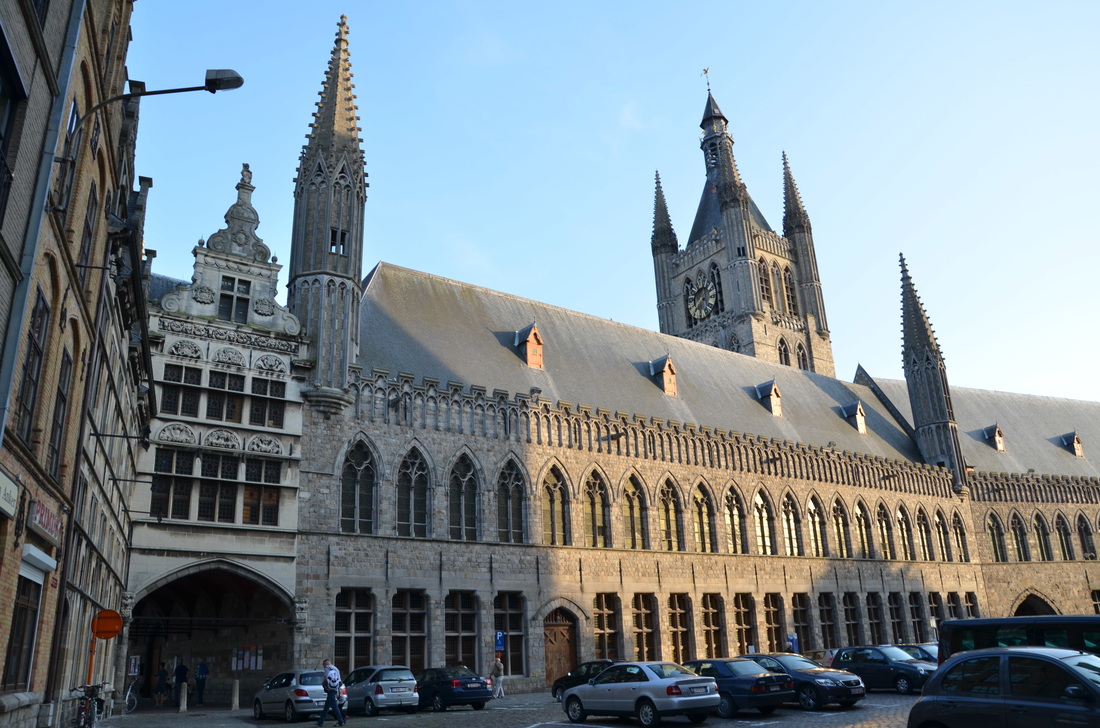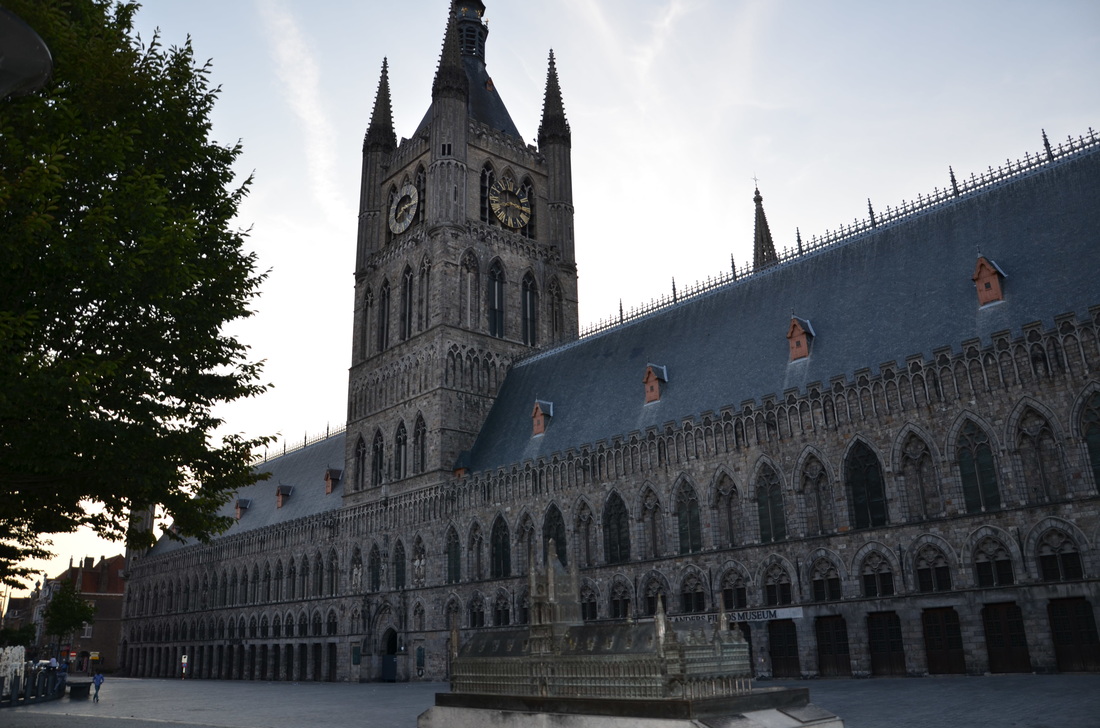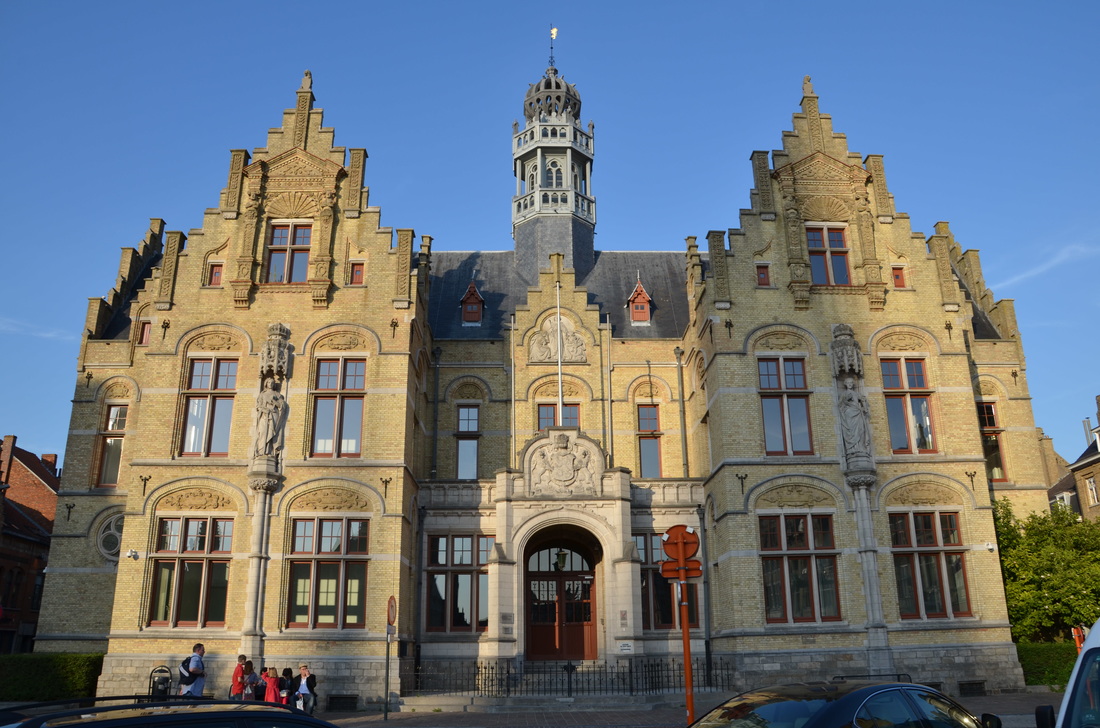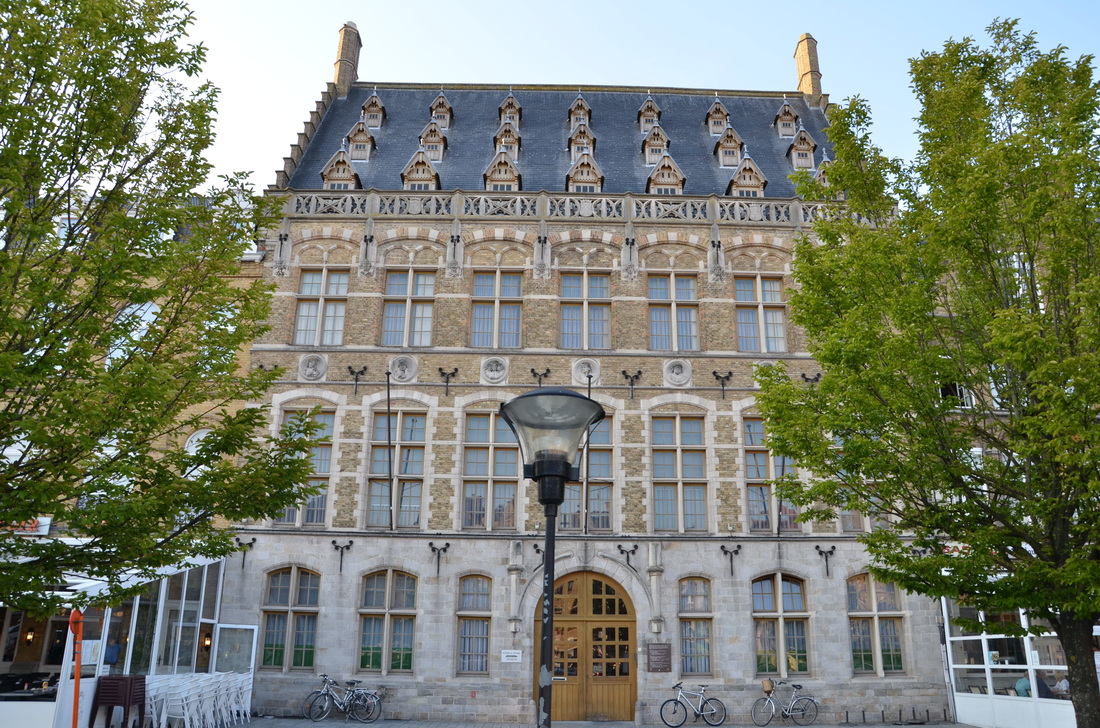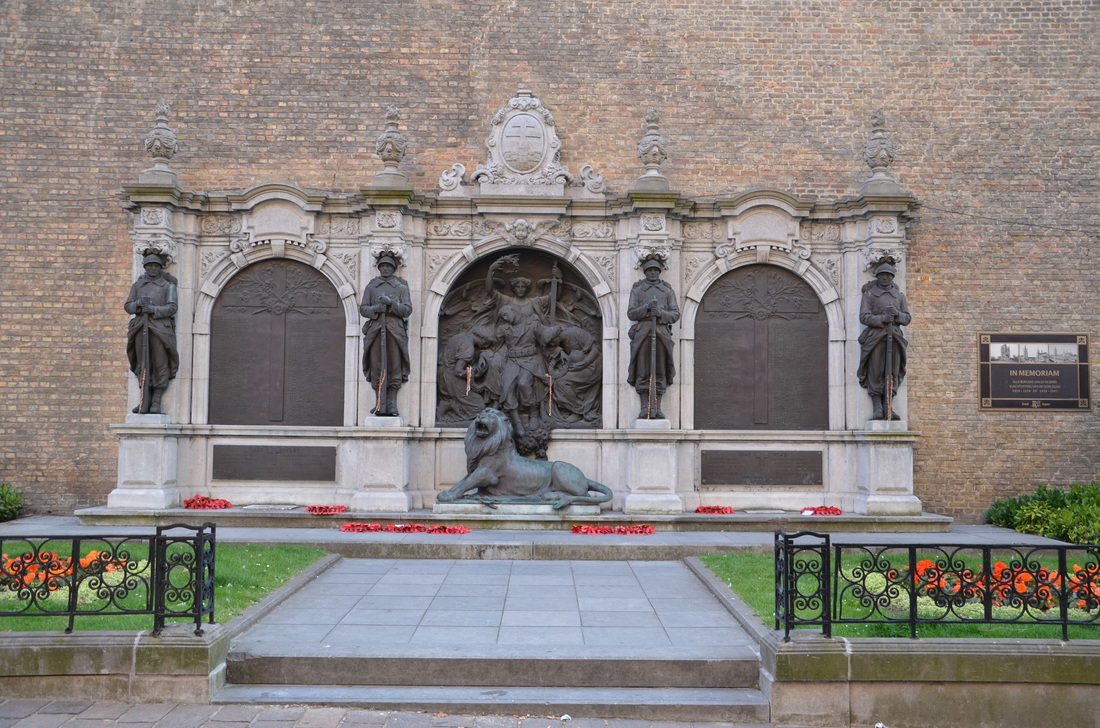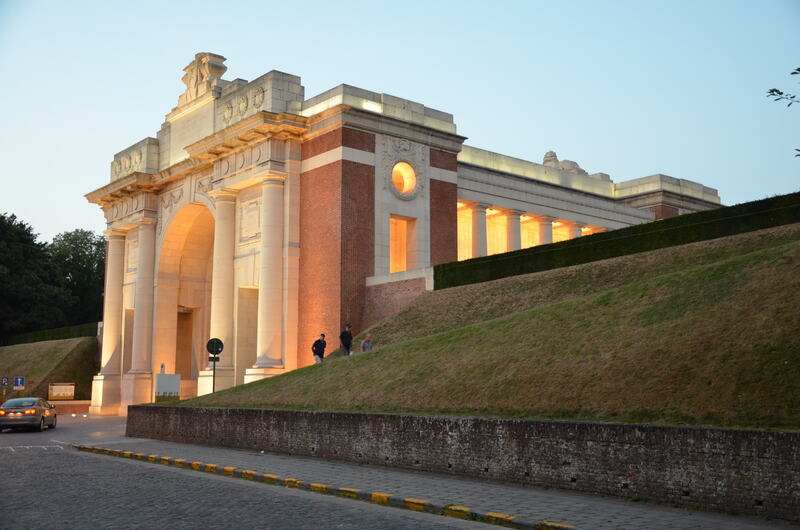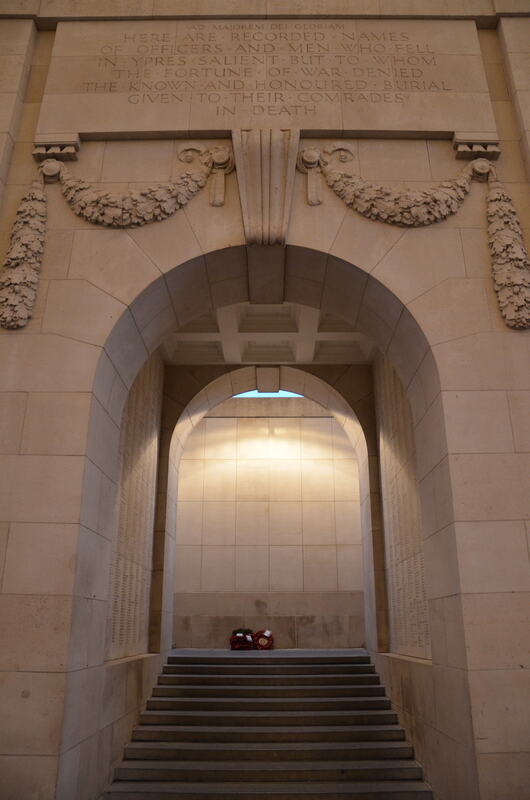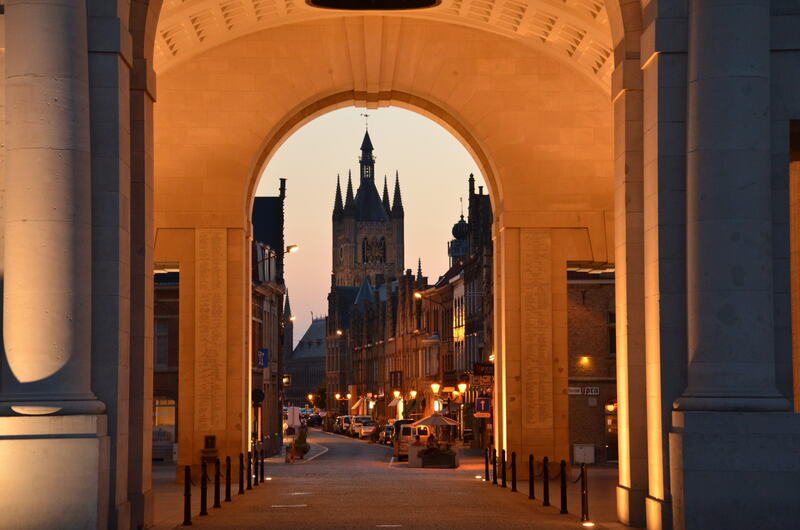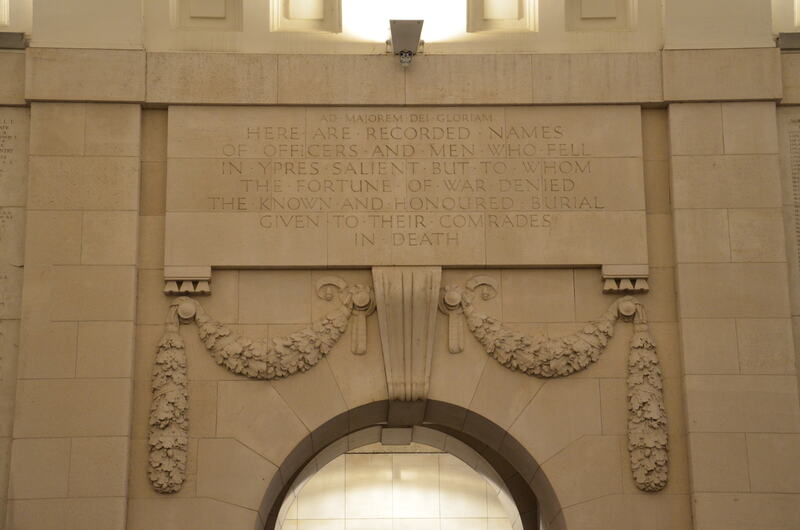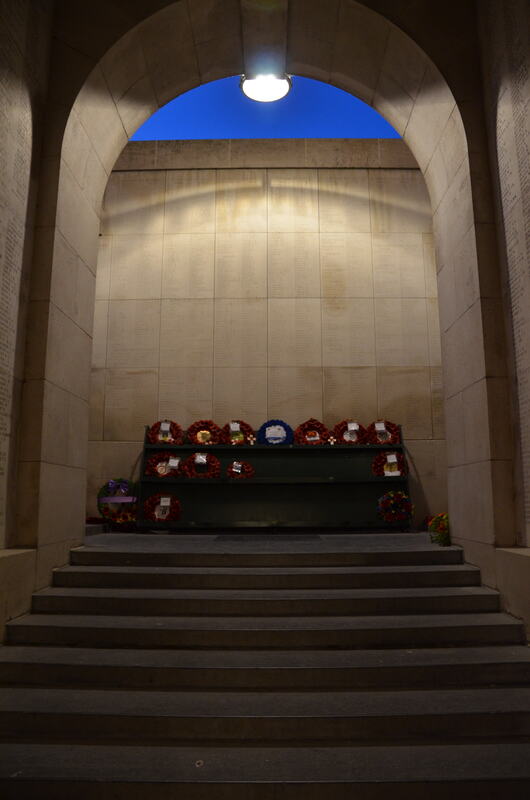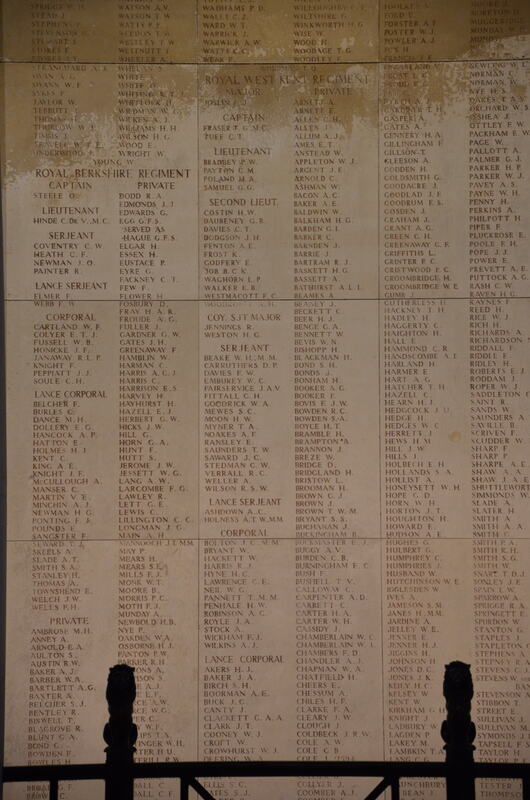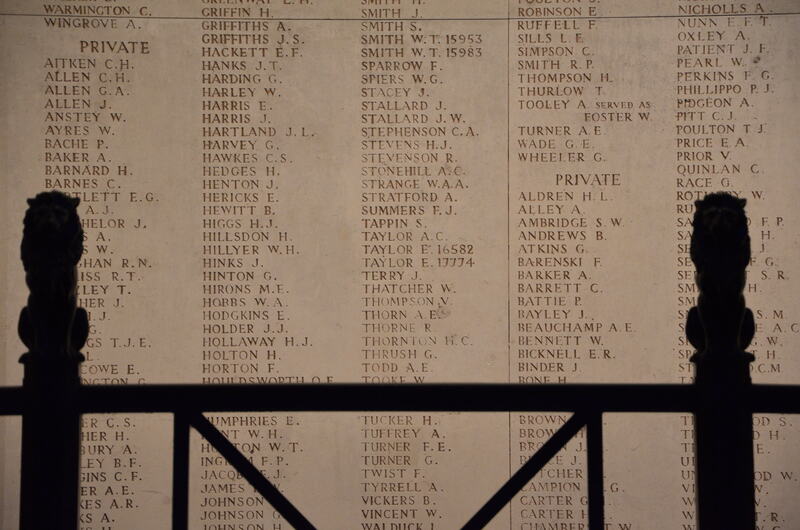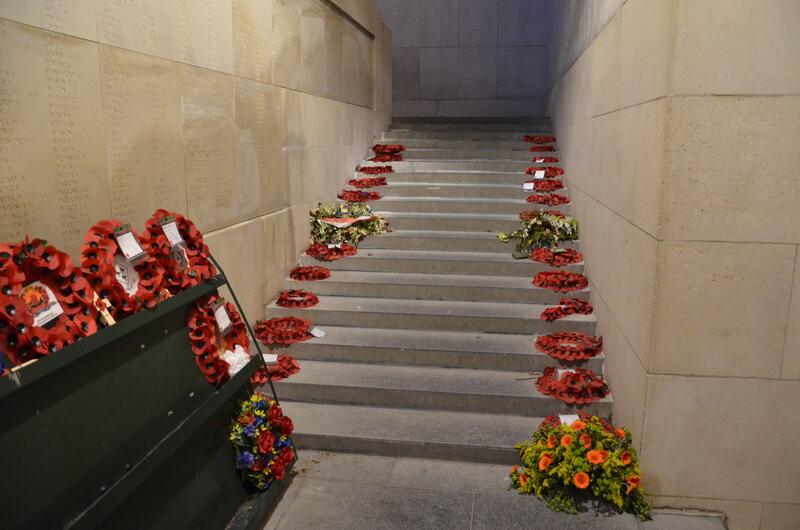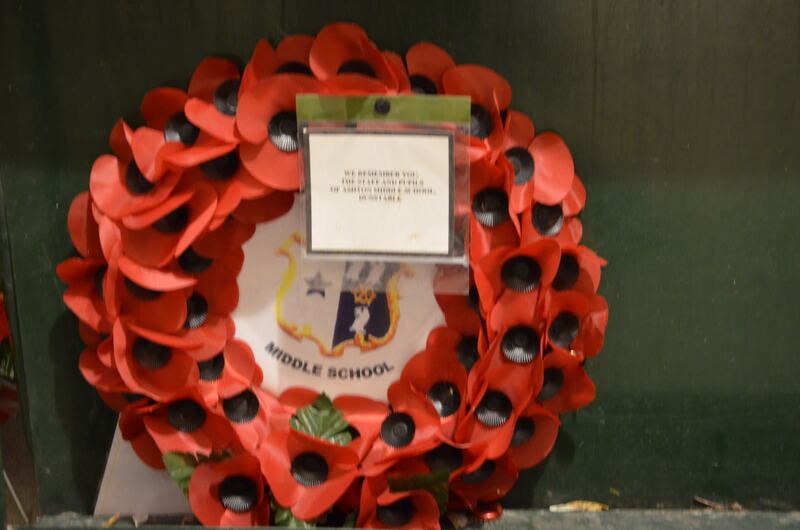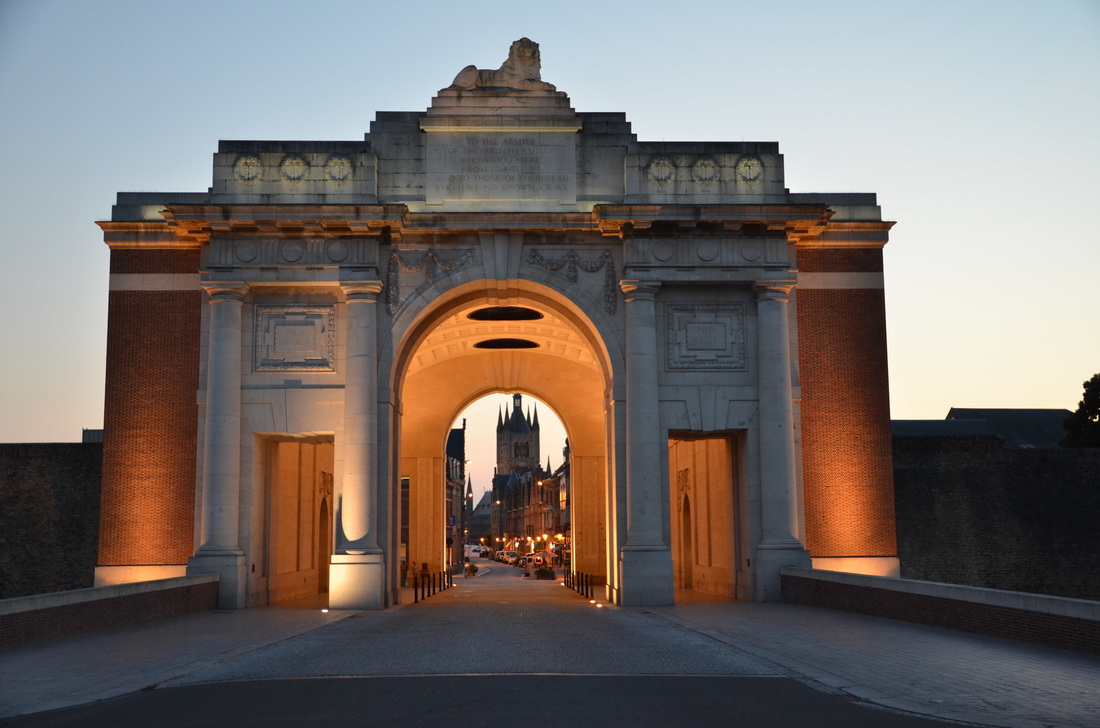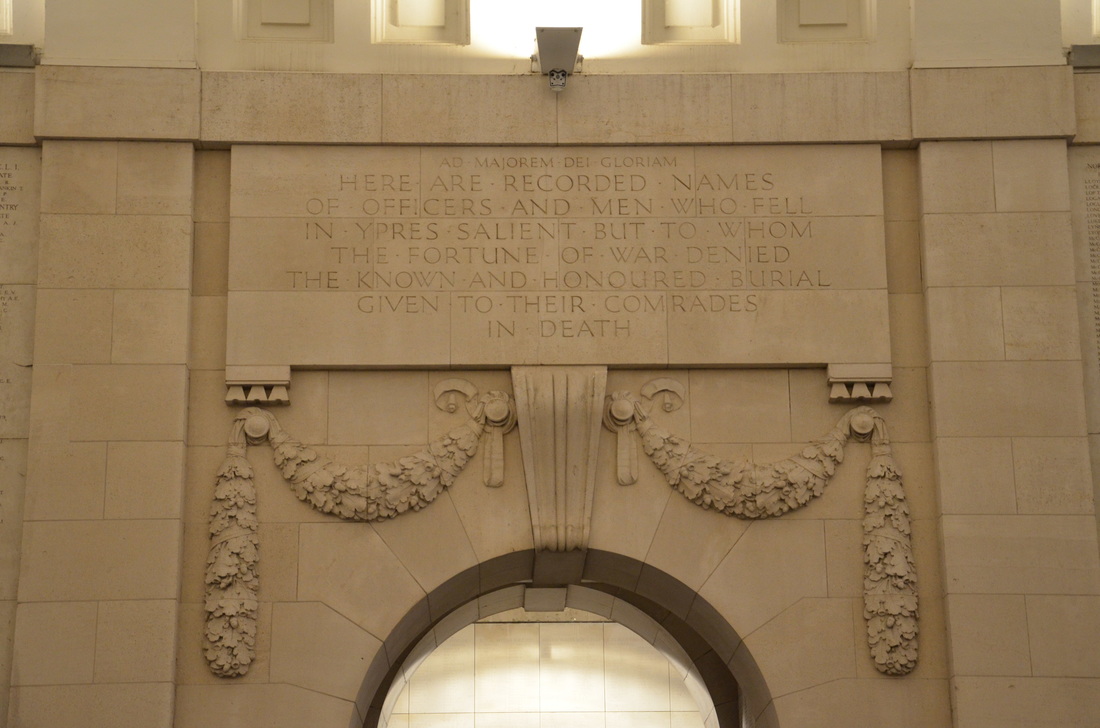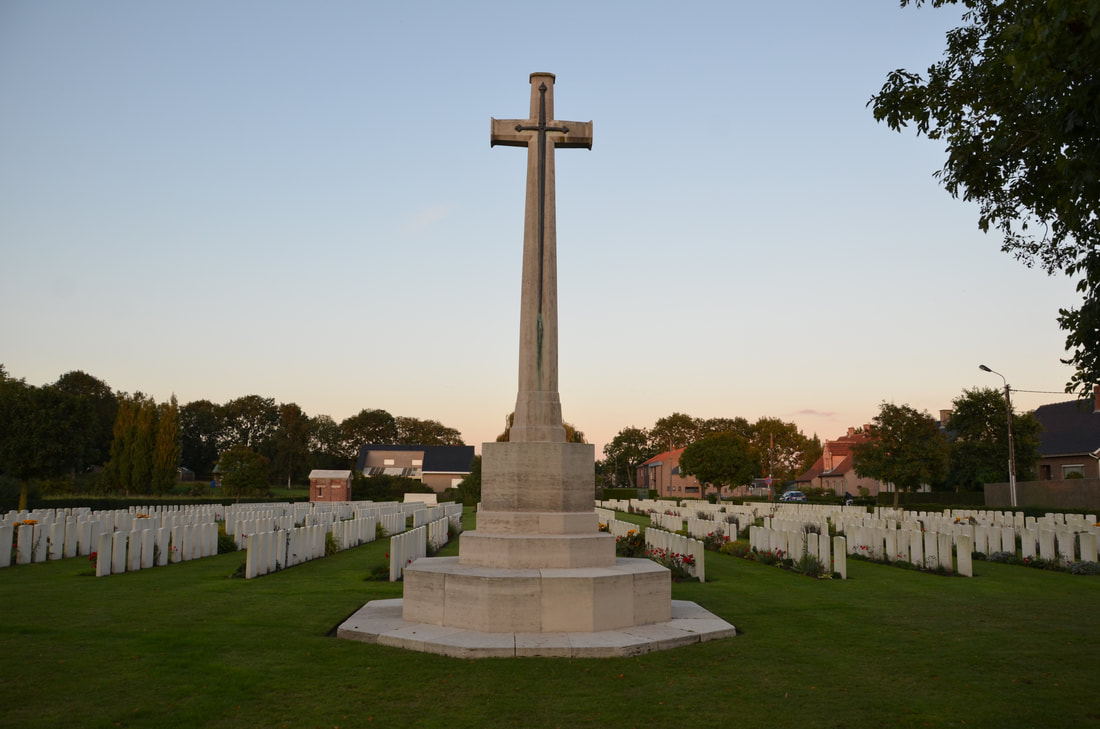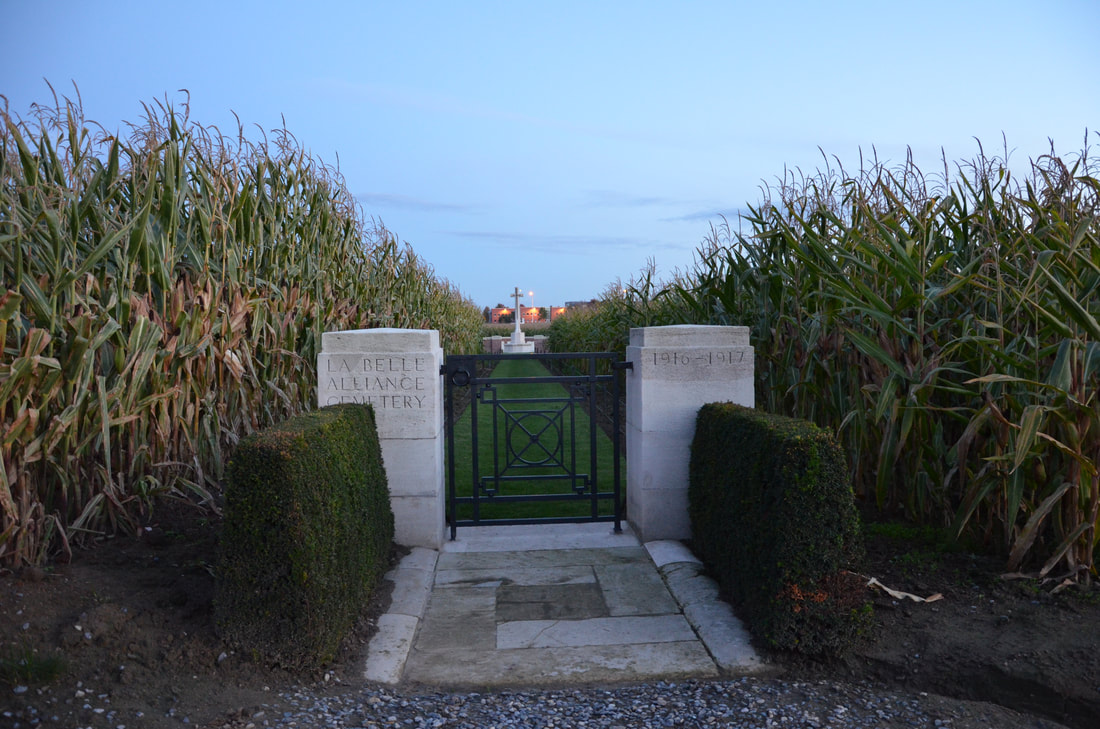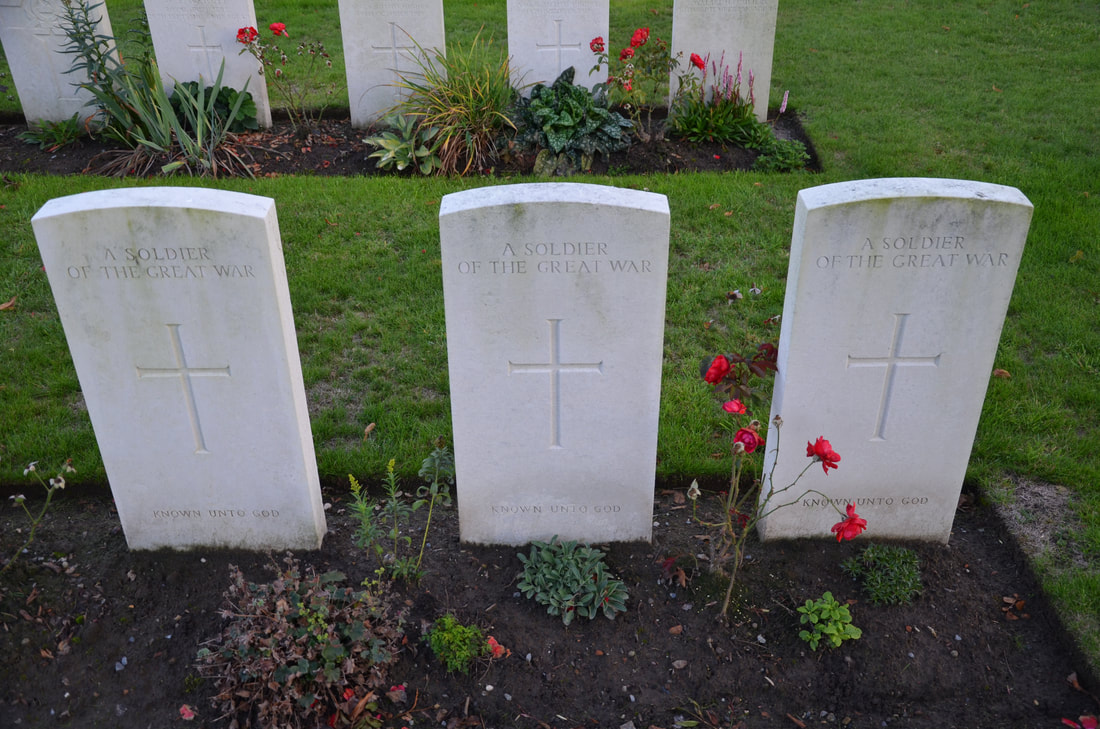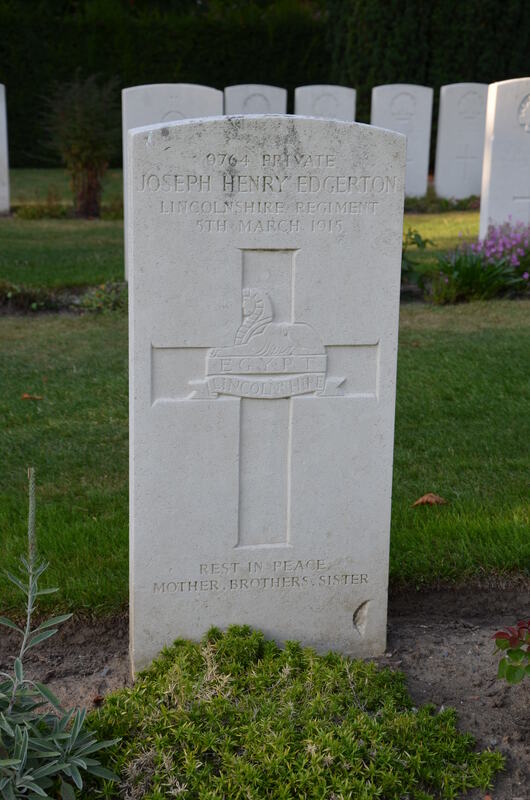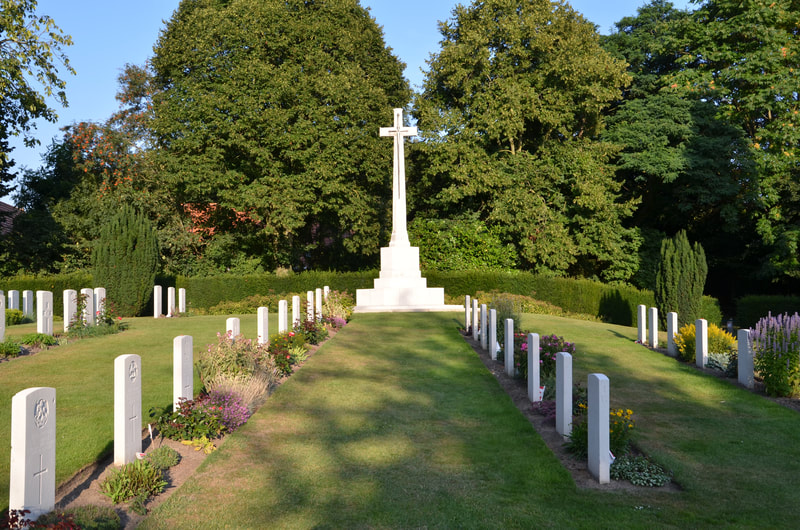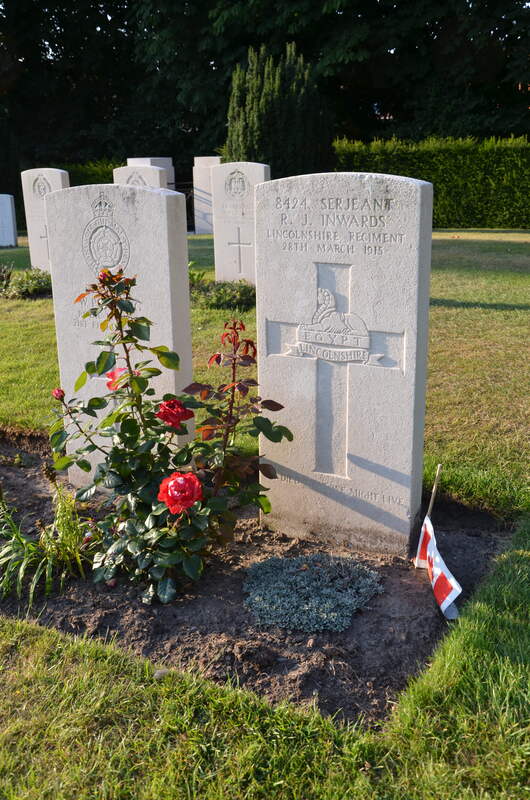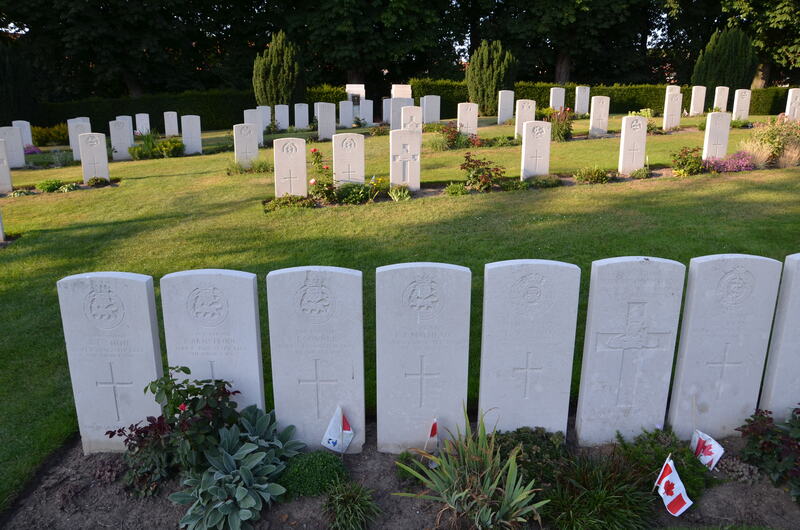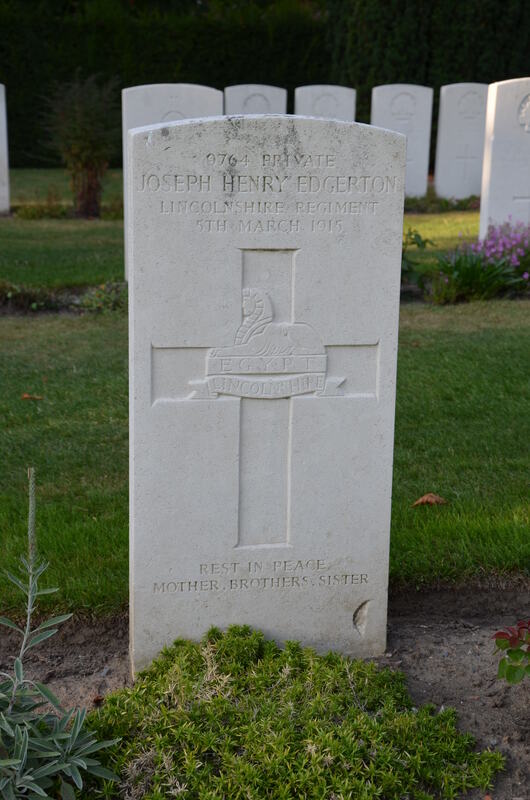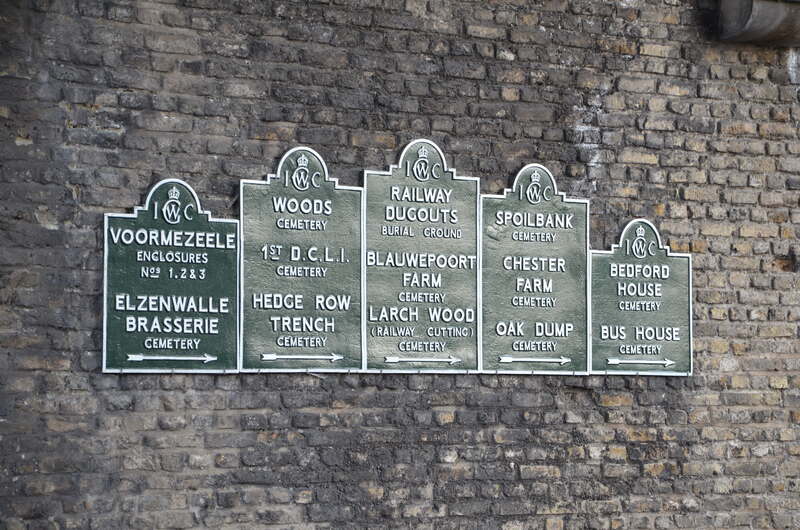Ieper miasto pokoju
Ieper (Ypres) to belgijskie miasto położone we flamandzkim regionie Westhoeck w prowincji Zachodnia Flandria, w pobliżu francuskiej granicy. Pierwsza wzmianka o Ieper pochodzi z 1066 roku. Wtedy to na wschód od małej rzeki stworzono niewielką osadę handlową, która z czasem zaczęła się rozwijać. To miasto o bardzo bogatej i różnorodnej przeszłości: od okresu średniowiecza, kiedy to przeżywało czasy świetności, stając się najważniejszym obok Brugii i Gandawy ośrodkiem handlu tkaninami we Flandrii, poprzez lata najazdów i okupacji ze strony Francuzów, Anglików czy Hiszpanów, aż po wiek XX, kiedy to podczas I Wojny Światowej zostało niemalże zrównane z ziemią. Po wojnie zabytkowe stare miasto zostało pieczołowicie odbudowane. Dziś o jego dawnej świetności przypominają liczne zabytkowe budowle. Najważniejsze z nich to m.in. monumentalne gotyckie sukiennice (Lakenhal), gotycka katedra św. Marcina (Sint-Maartenskerk), XII wieczny kościół św. Mikołaja (Sint-Niklaaskerk) oraz wybudowana w 1927 roku brama miejska zwana Menenpoort.
|
Sukiennice-po flamandzku Lakenhalle. Nazwa pochodzi od flamandzkiego słowa laken, oznaczającego wysokiej jakości wełnę wykorzystywaną do wyrobu tkanin. W okresie średniowiecza były centrum handlowym Ypres. Stanowiły miejsce sprzedaży i magazynowania tkanin dostarczanych tutaj kanałem rzecznym zwanym Ieperlee (lub kanał Ypres).
W tamtym okresie miasto było jednym z liderów wyrobu tkanin wśród miast Flandrii. Sukiennice składały się z serii budynków otaczających prostokątny dziedziniec. Prace budowlane rozpoczęto już w 1200 roku. Trwały one przeszło 100 lat. Budowę ostatecznie zakończono w 1304 roku. Aż do połowy 1840 roku przez miasto przepływała mała rzeczka zwana Ieperlee. |
Docierała ona aż do zachodniego krańca sukiennic. Tutaj łodzie o małym zanurzeniu mogły wyładowywać swoje towary. W sukiennicach następowała ostateczna kontrola urzędnicza towarów, które następnie trafiały w ręce kupców.
Dolny poziom sukiennic składał się z sal o ceglanych sklepieniach. Aby ułatwić kupcom i klientom dostęp do sal i sklepów sukiennice posiadały 48 drzwi na elewacji południowej, wychodzącej na rynek. W sukiennicach sprzedawano głównie tkaniny i wełnę, ale były również dni, w których kupcy sprzedawali tutaj warzywa i towary. Na piętrze hale były również ze sobą połączone. Niektóre z nich były bardziej zdobione niż inne. Dach na tym poziomie składał się z potężnych drewnianych belek. Hale były używane przez kupców jako magazyny, a także jako sale bankietowe. Rada Miasta wykorzystywała je jako sale konferencyjne.
Dolny poziom sukiennic składał się z sal o ceglanych sklepieniach. Aby ułatwić kupcom i klientom dostęp do sal i sklepów sukiennice posiadały 48 drzwi na elewacji południowej, wychodzącej na rynek. W sukiennicach sprzedawano głównie tkaniny i wełnę, ale były również dni, w których kupcy sprzedawali tutaj warzywa i towary. Na piętrze hale były również ze sobą połączone. Niektóre z nich były bardziej zdobione niż inne. Dach na tym poziomie składał się z potężnych drewnianych belek. Hale były używane przez kupców jako magazyny, a także jako sale bankietowe. Rada Miasta wykorzystywała je jako sale konferencyjne.
|
W jednej z głównych sal ściany zdobiło 12 fresków namalowanych przez Ferdynanda Pauwels. Przedstawiały one sceny z historii miasta w latach 1187 do 1388. Pozostałe ściany zdobiły obrazy przedstawiające kupców, namalowane przez artystę Louis Delbeke. Hala Radnych znajdowała się w północnej części sukiennic, na parterze. Tutaj wystrój był szczególnie imponujący.
Neuwerck to budynek dobudowany do sukiennic w latach 1619-1622. Zbudowano go w stylu renesansowym. Posiada dwa górne piętra, z których pierwsze łączy się z górnym piętrem gotyckich sukiennic. W 1862 roku nastąpiła renowacja. |
Ta część sukiennic posiadała kaplicę, freski, witraże i kominek. Na freskach przedstawiono postacie hrabiów Flandrii. Pierwsze i drugie piętro wspierają się na filarach. Stanowią one zadaszone przejście ze sklepieniami w całej wschodniej części sukiennic. To przejście prowadzi do Katedry Świętego Marcina.
Najstarszą częścią sukiennic jest dzwonnica. Kamień węgielny pod jej budowę położono w 1201 roku. Dokonał tego hrabia Flandrii Baudoin IX. Zadaniem dzwonnicy było informowanie o nadchodzącym zagrożeniu. Miała ona trzy poziomy. Parter wykorzystywano jako więzienie. Od XIV wieku dzwonnica służyła również jako ratusz miejski. Mieścił się w niej również skarbiec i zbrojownia.
Najstarszą częścią sukiennic jest dzwonnica. Kamień węgielny pod jej budowę położono w 1201 roku. Dokonał tego hrabia Flandrii Baudoin IX. Zadaniem dzwonnicy było informowanie o nadchodzącym zagrożeniu. Miała ona trzy poziomy. Parter wykorzystywano jako więzienie. Od XIV wieku dzwonnica służyła również jako ratusz miejski. Mieścił się w niej również skarbiec i zbrojownia.
Odbywały się tutaj również posiedzenia przedstawicieli cechów miejskich. W wieży umieszczone były również archiwa miejskie. W czasach średniowiecza wprowadzono tutaj okrutny zwyczaj wyrzucania z wieży czarnych kotów, które to miały być symbolem czarnej magii. Współcześnie w mieście raz na trzy lata odbywa się festiwal kotów. Jednym z jego punktów jest wyrzucania z wieży pluszowych zabawek.
Na wieży znajduje się również karylion składający się z 49 dzwonów. Wygrywa on melodię co godzinę.
Na wieży znajduje się również karylion składający się z 49 dzwonów. Wygrywa on melodię co godzinę.
Donkerpoort to korytarz znajdujący się na parterze dzwonnicy, na środku południowej elewacji. Korytarz prowadzi od strony południowej na rynku, przez centrum sukiennic aż do północnej strony sukiennic. Można przejść tędy do Katedry Świętego Marcina. W centrum korytarza znajdują się dwie bramy, po prawej i po lewej stronie, z których każda prowadzi na dziedziniec sukiennic. W korytarzu możemy również zobaczyć pocisk, wystrzeliwany z działa zwanego gruba berta, jakim Niemcy podczas I Wojny Światowej bombardowali Ypres.
Ostrzeliwanie Ypres rozpoczęto w listopadzie 1914 roku. 22 listopada wystrzelone przez Niemców pociski zapalające doszczętnie zniszczyły dach sukiennic. 19 kwietnia 1915 roku wojska niemieckie rozpoczęły z okolic Houthulst dzieło zniszczenia. Wykorzystując nowe działo, nazwane gruba berta, wznowili ostrzał miasta. Pociski o średnicy 42 centymetrów zrównały z ziemią całe miasto, również sukiennice. Ocalała jedynie część dzwonnicy. Wszystkie dokumenty i dzieła sztuki znajdujące się w sukiennicach zostały zniszczone bezpowrotnie.
Po wojnie w roku 1928 rozpoczęto odbudowę sukiennic. Trwała ona aż do 1967 roku. Zarówno sukiennice, jak i dzwonnica zostały odbudowane zgodnie z ich historycznym wyglądem. Dzięki temu w 1999 roku dzwonnica trafiła na listę Światowego Dziedzictwa UNESCO.
Ostrzeliwanie Ypres rozpoczęto w listopadzie 1914 roku. 22 listopada wystrzelone przez Niemców pociski zapalające doszczętnie zniszczyły dach sukiennic. 19 kwietnia 1915 roku wojska niemieckie rozpoczęły z okolic Houthulst dzieło zniszczenia. Wykorzystując nowe działo, nazwane gruba berta, wznowili ostrzał miasta. Pociski o średnicy 42 centymetrów zrównały z ziemią całe miasto, również sukiennice. Ocalała jedynie część dzwonnicy. Wszystkie dokumenty i dzieła sztuki znajdujące się w sukiennicach zostały zniszczone bezpowrotnie.
Po wojnie w roku 1928 rozpoczęto odbudowę sukiennic. Trwała ona aż do 1967 roku. Zarówno sukiennice, jak i dzwonnica zostały odbudowane zgodnie z ich historycznym wyglądem. Dzięki temu w 1999 roku dzwonnica trafiła na listę Światowego Dziedzictwa UNESCO.
|
Kościół św. Marcina to kopia gotyckiego kościoła episkopalnego wybudowanego w miejsce istniejącego tu w X lub XI wieku kościoła romańskiego. Budowę rozpoczęto w 1230 roku. Prace trwały aż do roku 1370.
Katedrę udostępnia się zwiedzającym poza nabożeństwami (msze święte 12.30-14.00). Wewnątrz w przestronnej nawie nie ma wielu ozdób. Wyjątek stanowi rozeta nad wejściem do południowego transeptu (jest to hołd złożony Albertowi I, uważanemu za bohatera narodowego), oraz ołtarz boczny z piękną figurą Najświętszej Marii Panny z Thuyne. W katedrze znajdują się grobowce: Corneliusa Jansena, biskupa Ypres w latach 1635-1638, twórcy ruchu teologicznego Jansenizmu, oraz hrabiego Roberta z Bethune zwanego Lwem z Flandrii. Wieża katedry wznosi się na wysokość 100 metrów. Nie jest otwarta dla turystów. Lapidarium zawiera ruiny dekanatu św. Marcina. Umieszczono tutaj duże kawałki murów, zrównanej z ziemią Katedry. Mają one być namacalnym dowodem okropieństwa i zniszczenia, jakie dotknęły Ypres podczas I Wojny Światowej. Budynek klasztorny można zwiedzać po północnej stronie Katedry. |
|
Budynek Sądu-Rynek Główny 1. Przed I Wojną Światową w budynku tym znajdował się Pałac Biskupi. Następnie utworzono tu szpital pod wezwaniem Naszej Pani.
Po zakończeniu działań wojennych rozpoczęto odbudowę budynku w stylu eklektycznym, według projektu architekta odpowiedzialnego za odbudowę Ypres, Jules Coomans. Współcześnie w budynku tym mieści się sąd. Od strony ulicy Torhoutstraat można zobaczyć starą bramę wjazdową z napisem Hopital Notre Dame. Cały mur przetrwał działania wojenne i jest jednym z nielicznych przykładów oryginalnej architektury przedwojennego Ypres. |
|
Budynek sądu gospodarczego (fl. Kasstelrij) mieści się przy Rynku Głównym 10. Budynek ten został wybudowany w stylu renesansowym w XV wieku. W tym okresie feudalne Hrabtwo Flandrii było podzielone na dzielnice (Castellania). Zarządzali nimi wicehrabiowie lub kasztelani. Dom Kasztelana nazywał się Chatellenie (nazwa francuska) lub Kasselrij (nazwa flamandzka).
Po rewolucji francuskiej w 1790 roku instytucja kasztelana została zniesiona. W roku 1800 budynek został odkupiony przez miasto i nosił nazwę Hotel de Chatellenie. Po I Wojnie Światowej budynek odbudowano w stylu renesansowym według projektu J. Coomans. Na dachu budynku dodano trzy piętra po siedem lukarn w rzędzie. |
Była to pewna ingerencja w historyczny wygląd budynku. Także znajdujące się nad oknami na pierwszym piętrze siedem medalionów przedstawiające siedem grzechów głównych zostały dodane podczas powojennej rekonstrukcji budynku. Zaprojektował je rzeźbiarz z Ghent Alois De Beule.
Do 1967 roku budynek pełnił funkcję Ratusza, który przeniesiono do odbudowanych Sukiennic. Obecnie ma tu swoją siedzibę Sąd gospodarczy.
Do 1967 roku budynek pełnił funkcję Ratusza, który przeniesiono do odbudowanych Sukiennic. Obecnie ma tu swoją siedzibę Sąd gospodarczy.
|
Brama klasztorna-Teatr Miejski-oryginalna brama (fl. Kloosterpoort) pochodzi z około 1500 roku. Stanowi ona wejście do dekanatu św. Marcina, który został zniesiony w 1560 roku po ogłoszeniu diecezji w Ypres. Odbudowano go w stylu klasycystycznym w 1780 roku i odnowiono w 1938 roku.
Teatr Miejski (fl. Stadsschouwburg) początkowo był wykorzystywany jako dom proboszcza. W 1803 roku zmienił właściciela i stworzono tu teatr. W czasie I Wojny Światowej, podobnie jak większość budynków w Ypres, został doszczętnie zniszczony. Odbudowany w latach trzydziestych XX wieku. |
Miejsca pamięci o ofiarach I i II Wojny Światowej w Ieper
|
Pomnik ofiar I Wojny Światowej poświęcony 155 ofiarom cywilnym i setkom tysięcy żołnierzy, którzy stracili życie w rezultacie działań wojennych podczas I Wojny Światowej. Pomnik został zaprojektowany przez architekta Jules Homere Martin Coomans (1871-1937) w 1924 roku.
Był on również odpowiedzialny za odbudowę Ypres, w tradycyjnym, historycznym stylu, po działaniach wojennych. W latach 1924-1926 pomnik wykonał rzeźbiarz z Gandawy Alois De Beule (1861-1935). Początkowo Coomans planował umieszczenie pomnika we wschodnim skrzydle sukiennic. |
Jednak nie były one jeszcze ostatecznie odbudowne, dlatego pomnik umieszczono na murze budynku znajdującego się naprzeciw zachodniej części sukiennic. Uroczyste odsłonięcie nastąpiło 27 czerwca 1926 roku.
W 2010 roku umieszczono nową tablicę i dedykowano ten pomnik ofiarom zarówno I jak i II Wojny Światowej.
W 2010 roku umieszczono nową tablicę i dedykowano ten pomnik ofiarom zarówno I jak i II Wojny Światowej.
Menin Gate Memorial
Pomnik ku czci kilkudziesięciu tysięcy żołnierzy brytyjskich oraz wspólnoty brytyjskiej (z wyjątkiem żołnierzy z Nowej Zelandii, którzy mają własny pomnik). Wewnątrz, na ścianach, wygrawerowano nazwiska 54.389 oficerów i żołnierzy poległych w Ypres przed 16 sierpnia 1917, których grobów nigdy nie odnaleziono.
W centrum zarówno po północnej, jak i południowej stronie bramy znajdują się szerokie schody prowadzące do starych murów obronnych i loggii. Napis nad oboma wejściami brzmi:
AD MAJOREM DEI GLORIAM
HERE ARE RECORDED NAMES
OF OFFICERS AND MEN WHO FELL
IN YPRES SALIENT BUT TO WHOM
THE FORTUNE OF WAR DENIED
THE KNOWN AND HONOURED BURIAL
GIVEN TO THEIR COMRADES
IN DEATH
HERE ARE RECORDED NAMES
OF OFFICERS AND MEN WHO FELL
IN YPRES SALIENT BUT TO WHOM
THE FORTUNE OF WAR DENIED
THE KNOWN AND HONOURED BURIAL
GIVEN TO THEIR COMRADES
IN DEATH
Pomnik wybudowano we wschodniej części Ypres. W miejscu, przez które przechodził praktycznie każdy żołnierz wyruszający do walki na odcinku wschodnim od Ypres. Wielu z nich nie wróciło. W czasie wojny nie było w tym miejscu żadnej bramy, jedynie fosa i fragmenty dawnych fortyfikacji miejskich.
Brama Menin ku czci zaginionych została zaprojektowana przez Sir Reginald Blomfield. Rzeźby są dziełem Sir William Reid Dicka. Wymiary pomnika są imponujące: 36,5 metra długości i 20 metrów szerokości. Oba końce są zakończone łukową bramą o wymiarach: 9 metrów szerokości i 14,5 metrów wysokości, wspieraną z obu stron przez kolumny. Na szczycie, po stronie wschodniej znajduje się pomnik lwa, a pod nim napis:
TO THE ARMIES
OF THE BRITISH EMPIRE
WHO STOOD HERE
FROM 1914 TO 1918
AND TO THOSE OF THEIR DEAD
WHO HAVE NO KNOWN GRAVE
OF THE BRITISH EMPIRE
WHO STOOD HERE
FROM 1914 TO 1918
AND TO THOSE OF THEIR DEAD
WHO HAVE NO KNOWN GRAVE
Taki sam napis znajduje się na drugiej bramie po stronie zachodniej. Jest ona zwieńczona rzeźbą sarkofagu z flagą i wieńcem.
Ścieżką prowadzącą przez dawne mury obronne możemy dotrzeć, do oddalonego o 1100 metrów, najmniejszego cmentarza wojennego w Ypres znajdującego się przy bramie Lille.
Współcześnie Menin Gate Memorial jest jednym z najbardziej znanych pomników wojennych na świecie. Jest prawdopodobnie również jedynym pomnikiem, przy którym odbywają się codzienne uroczystości. Mają one zawsze miejsce o godzinie 20. Uroczystość tą zainaugurowano 1 sierpnia 1928 roku.
Była ona wyrazem wdzięczności dla wszystkich żołnierzy, którzy walczyli w Ypres, zwłaszcza tych, których grobów nigdy nie odnaleziono. Tradycja ostatniego postu została przerwana na okres 4 lat podczas drugiej wojny światowej. Z dniem wyzwolenia Ypres, przez Dywizję Generała Maczka, powrócono do tradycji oddawani hołdu poległym żołnierzom. Uroczystość zaczyna się od minuty ciszy. W ceremonii biorą udział zarówno mieszkańcy, jak i turyści. Na czas uroczystości ruch samochodowy przez bramę zostaje zamknięty.
Współcześnie Menin Gate Memorial jest jednym z najbardziej znanych pomników wojennych na świecie. Jest prawdopodobnie również jedynym pomnikiem, przy którym odbywają się codzienne uroczystości. Mają one zawsze miejsce o godzinie 20. Uroczystość tą zainaugurowano 1 sierpnia 1928 roku.
Była ona wyrazem wdzięczności dla wszystkich żołnierzy, którzy walczyli w Ypres, zwłaszcza tych, których grobów nigdy nie odnaleziono. Tradycja ostatniego postu została przerwana na okres 4 lat podczas drugiej wojny światowej. Z dniem wyzwolenia Ypres, przez Dywizję Generała Maczka, powrócono do tradycji oddawani hołdu poległym żołnierzom. Uroczystość zaczyna się od minuty ciszy. W ceremonii biorą udział zarówno mieszkańcy, jak i turyści. Na czas uroczystości ruch samochodowy przez bramę zostaje zamknięty.
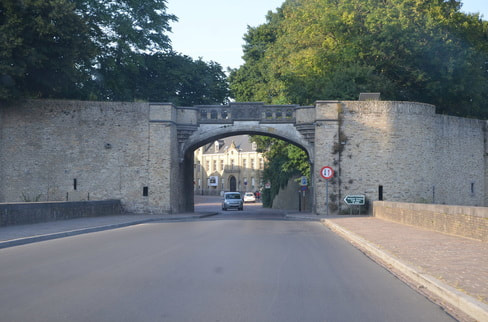 Brama Lille w Ieper, fot. PM
Brama Lille w Ieper, fot. PM
Brama Lille (fl. Rijselpoort) jest jednym z kilku wejść do starego ufortyfikowanego miasta, jakim było Ieper. Jest ona jedyną bramą w mieście, która przetrwała bombardowania wojsk niemieckich podczas I Wojny Światowej. Na początku swego istnienia Ieper było małą osadą nad rzeką Ieper. Miało dwa wejścia. Jedno na północy, drugie na południu. Lille to oryginalna południowa brama. To wejście do miasta zostało nazwane Mesenpoort, to znaczy drzwi do Mesén (Messines). Inna nazwa to Brama Lille, ponieważ trasa prowadzi do francuskiego miasta Lille. Brama Lille jest również znana pod jej flamandzką nazwą Rijselpoort. Okrągłe wieże są najstarszą częścią kamiennych murów obronnych. Pochodzą one z 1385 roku i są przykładem burgundzkiego okresu historii miasta. Most nad bramą został dodany w czasie późniejszych modyfikacji fortyfikacji miejskich. Pod koniec Rijselstraat droga opuszcza miasto pod Rijselspoort (Brama Lille). Po obu stronach są mury obronne wybudowane na wcześniejszych murach średniowiecznych przez wielkiego inżyniera wojskowego, pracującego dla króla Ludwika XIV, Sébastien Le Prestre markiza de Vauban. Był on odpowiedzialny za budowę fortyfikacji w ponad 300 miastach i miasteczkach we Francji oraz za granicą.
Cmentarze wojenne w Ypres to miejsca pochówku tysięcy żołnierzy poległych w walkach toczących się tutaj podczas I Wojny Światowej. Znajduje się tutaj przeszło setka cmentarzy, na których spoczywają żołnierze angielscy oraz ci z krajów Commonwealth (Wspólnota Narodów), jeden cmentarz niemiecki, dwa francuskie i jeden belgijski. Cmentarze napotyka się tutaj wszędzie, między osiedlami domków jednorodzinnych oraz czasami w szczery polu, wśród plonów kukurydzy. Niejednokrotnie trudne do znalezienia, mimo wielu tablic informacyjnych. Wszystkie cmentarze są wyjątkowo zadbane i ogólnodostępne.
Cmentarz Ramparts został uruchomiony przez Francuzów w listopadzie 1914 roku. Początkowo chowano tam poległych żołnierzy francuskich. W późniejszym okresie przeniesiono ich ciała na inny cmentarz. W okresie od lutego 1915 do kwietnia 1918 roku chowano tu żołnierzy Wspólnoty Brytyjskiej. Jest to jeden z najmniejszych wojskowych cmentarzy w Ypres. Pochowano tu 197 żołnierzy:
Anglicy 162
Kanadyjczycy 10
Australijczycy 11
Nowozelandczycy 14
Kanadyjczycy 10
Australijczycy 11
Nowozelandczycy 14
Cmentarz został zaprojektowany przez sir Reginalda Blomfield. Jest on usytuowany w zacisznym miejscu, na szczycie starych murów obronnych, obok fosy, która biegnie wokół starego miasta.
Poniżej adres strony internetowej niezwykle szczegółowo i interesująco opisującej działania wojenne prowadzone, na terenie klinu Ieper, podczas I Wojny Światowej.
http://www.greatwar.co.uk/places/ypres-salient-cemeteries.htm
http://www.greatwar.co.uk/places/ypres-salient-cemeteries.htm
